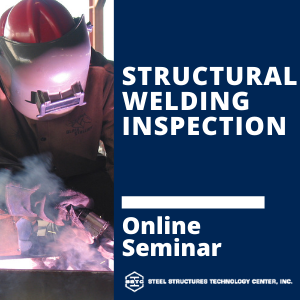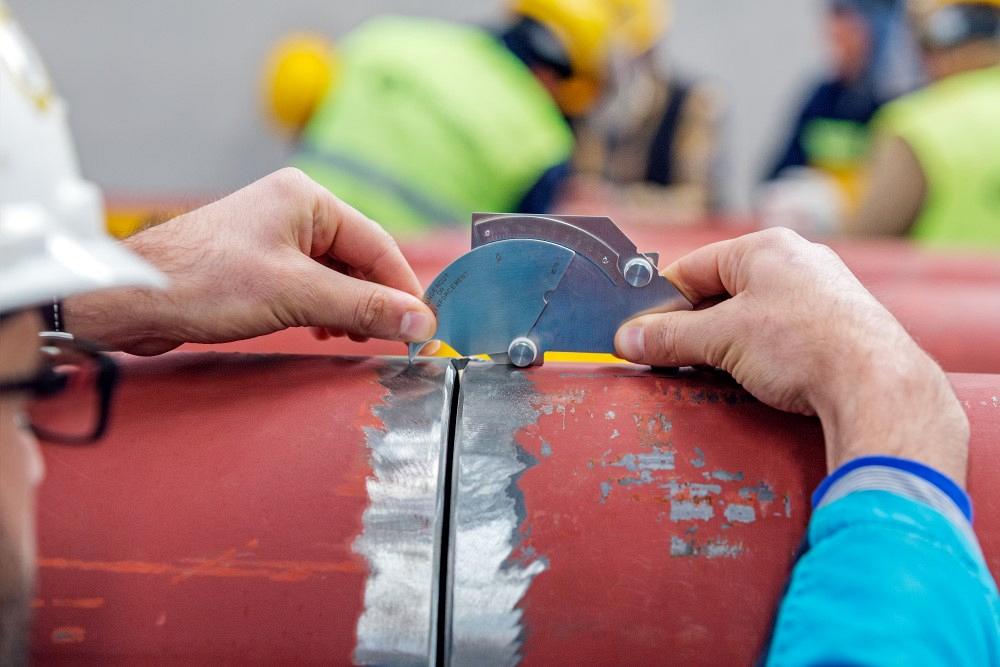Recognizing the Specifications for Welding Inspection Gilbert Arizona: A Complete Review
Recognizing the Specifications for Welding Inspection Gilbert Arizona: A Complete Review
Blog Article
Welding Evaluation Demystified: Trick Processes, Tools, and the Necessary Duty They Play in Maintaining High-Quality Welds
Welding assessment serves as a vital backbone in the assurance of architectural stability and top quality in bonded joints, impacting various industries from building and construction to manufacturing. What are the essential procedures and devices that make sure these requirements are maintained?
Significance of Welding Assessment
Ensuring the honesty of bonded joints is paramount in various markets, making the relevance of welding examination undeniable. The top quality of welds directly affects the safety, efficiency, and long life of structures and parts. In fields such as building and construction, automobile, aerospace, and manufacturing, any failing in bonded joints can bring about tragic consequences, including architectural failings, tools breakdown, and loss of life.
Welding examination acts as a crucial top quality control action, guaranteeing that welds meet specified standards and regulatory demands. It identifies defects such as fractures, porosity, and insufficient combination that may compromise the strength of the weld. By detecting these issues early, welding inspection can protect against expensive rework, hold-ups, and prospective safety and security hazards.
Furthermore, welding inspection promotes conformity with sector requirements and accreditations, improving the reputation of organizations and their items. It likewise supports constant renovation by providing important feedback to welding workers, enabling them to improve their processes and methods.
Eventually, the significance of welding examination can not be overstated; it is essential for keeping top notch welds, making sure safety, and safeguarding investments across different industries.

Key Evaluation Processes
Efficient welding assessment counts on a collection of essential procedures designed to evaluate the high quality and integrity of welds. These processes include both visual and non-destructive testing (NDT) techniques, guaranteeing that any defects are recognized prior to they endanger architectural stability.
The initial step in the inspection process is a comprehensive visual exam, which allows inspectors to analyze welds for surface area problems such as splits, damages, and incomplete fusion. Following aesthetic checks, various NDT strategies may be employed, consisting of ultrasonic testing, magnetic particle testing, and radiographic screening. Each method provides distinct advantages; for instance, ultrasonic screening can discover inner flaws, while radiographic screening gives a permanent record of the weld's internal framework.
Additionally, it is important to verify conformity with appropriate codes and requirements, guaranteeing that the weld meets sector specs. This includes inspecting weld dimensions and placement, as improper measurements can result in failures under load.
Vital Devices for Inspection
Consistently using the right devices is important for accomplishing exact welding examinations. A detailed collection of assessment devices assists ensure that welds meet rigid high quality criteria and specifications.
Among the key tools is the aesthetic inspection gauge, which permits assessors to examine surface area problems, such as tidiness websites and surface coating, directly. Additionally, calipers and micrometers are crucial for measuring weld measurements and ensuring they satisfy needed tolerances.
For more in-depth assessments, ultrasonic testing (UT) devices is indispensable. This technique utilizes high-frequency acoustic waves to find internal problems and examine material thickness. Likewise, magnetic particle screening (MT) and color penetrant testing (PT) are important for identifying surface area and near-surface issues, giving prompt visual indications of prospective concerns.
Welders should likewise be outfitted with firmness testers, which assess the mechanical homes of the weld steel and base materials, ensuring they fulfill specified demands. Documenting findings with digital evaluation devices improves traceability and top quality control. By employing these essential devices, inspectors can keep top quality welds, inevitably adding to the safety and reliability of bonded structures.
Typical Issues and Their Discovery
Welds, comparable to the backbone of architectural honesty in building and production, can exhibit different defects that endanger their efficiency and click this security. Usual issues consist of porosity, splits, undercut, absence of blend, and slag inclusions (Welding Inspection Gilbert Arizona). Each of these defects can show up because of incorrect welding techniques, inadequate product selection, or inadequate preparation

Discovery of these issues can be attained with numerous non-destructive testing methods, including aesthetic examination, ultrasonic screening, and radiographic screening. Each technique plays a vital duty in recognizing these mistakes, guaranteeing that the honesty of the weld is kept and minimizing the danger of failing in important applications.

Finest Practices for Top Quality Guarantee
Making certain the best of welds is extremely important for architectural honesty and security, particularly in markets where the consequences of failing can be extreme. To accomplish this, several ideal practices for quality control need to be implemented throughout the welding process.
First, a robust welding procedure spec (WPS) must be established, outlining the essential parameters click over here now for every welding operation. This makes certain uniformity and adherence to sector criteria. Second, complete training and accreditation of welders are crucial; proficient workers are better furnished to generate premium welds and acknowledge possible defects.
Routine inspections ought to be incorporated right into the welding procedure, using both visual and non-destructive screening (NDT) approaches to find imperfections at an early stage. Normal calibration of inspection tools is essential to maintain accuracy. Furthermore, documenting all welding tasks, consisting of evaluations and corrective actions, produces a traceable record that can be invaluable for quality assurance.
Verdict
To conclude, welding inspection functions as an essential mechanism for guaranteeing the stability and dependability of bonded joints throughout industries - Welding Inspection Gilbert Arizona. With the application of crucial examination procedures and the application of crucial devices, companies can properly recognize and address potential defects. Adherence to best methods in quality control not only boosts safety and security yet additionally makes certain conformity with sector requirements, eventually adding to the longevity and efficiency of elements and structures
Welding inspection serves as an essential backbone in the guarantee of architectural honesty and quality in bonded joints, influencing different sectors from building and construction to manufacturing.Ensuring the stability of welded joints is paramount in different industries, making the value of welding assessment undeniable.Welding inspection serves as a vital quality control action, making certain that welds fulfill specified criteria and regulative needs. By utilizing these important devices, examiners can maintain high-grade welds, inevitably contributing to the security and reliability of bonded structures.
In verdict, welding evaluation offers as a crucial mechanism for making certain the stability and integrity of welded joints throughout sectors.
Report this page